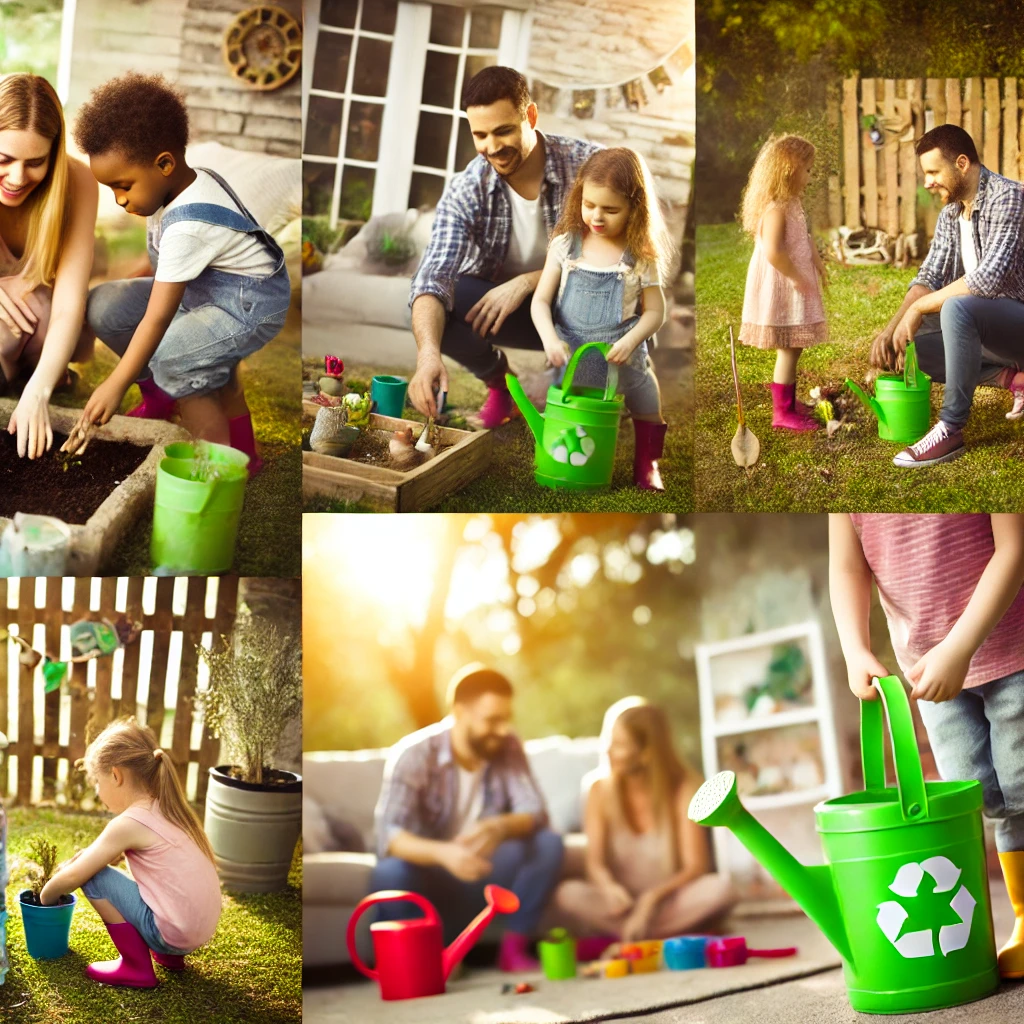Physical Address
304 North Cardinal St.
Dorchester Center, MA 02124
Physical Address
304 North Cardinal St.
Dorchester Center, MA 02124


Building a sustainable future begins with teaching the next generation the value of eco-friendly choices. Introducing kids to sustainability isn’t just about protecting the planet; it’s also about fostering empathy, responsibility, and a deeper understanding of the world. This guide explores practical, hands-on ways to engage children in sustainability, no matter where you live.
Kids learn best when they’re engaged and having fun, so incorporate interactive activities. Consider gardening together, creating crafts with recycled materials, or building birdhouses. These activities make eco-friendly concepts tangible and accessible for kids of all ages.
Why It’s Effective: Hands-on experiences are memorable. When kids plant a garden, they see firsthand how soil, water, and sun work together, creating a natural appreciation for the environment.
Example Activity: Set up a “sustainability scavenger hunt” where children find items in nature, like leaves or rocks, or look for examples of renewable energy sources like solar panels in your neighborhood. It’s fun and teaches them to observe the world from a green perspective.
Home is where lifelong habits form. By implementing eco-friendly practices in everyday routines, you can help your kids develop sustainable habits that become second nature. Simple actions like using reusable bags, conserving water, or cooking with locally-sourced foods teach children the importance of making mindful choices.
Tip: Create a “green chore chart” with tasks like “turn off lights when leaving a room” or “help separate recyclables.” It’s a great way for them to practice eco-conscious decisions while contributing to household tasks.
Why We Do This: At EcoTipsEveryday.com, we believe that incorporating sustainable practices at home builds a solid foundation. When kids see their family making these choices daily, they’re more likely to adopt them.
Exploring the natural world is one of the best ways to teach sustainability. Nature walks, beach cleanups, and visits to nature reserves can help kids understand ecosystems and the importance of biodiversity.
Why It Works: Kids are naturally curious. They’ll have questions about animals, plants, and how everything in nature is interconnected. By using nature as a classroom, they gain a personal connection to the environment.
Example: Take your child on a hike or to a local park, where you can point out different trees, plants, and insects. Explain how these organisms contribute to the ecosystem. This real-world interaction makes the concept of “protecting the planet” relatable and meaningful.
Recommended Resource: The Nature Conservancy offers excellent resources and activities for kids to learn more about biodiversity.
Helping kids understand waste management is critical for sustainable living. Kids should know how recycling works and why reducing waste is important. Teach them to distinguish between recyclable, compostable, and non-recyclable materials.
Why It’s Important: Understanding waste management helps kids make more conscious decisions about what they throw away. When they grasp that not all waste “just disappears,” they’ll naturally start to make eco-friendly choices.
Activity Idea: Create a “waste audit” where kids help identify the different types of waste generated at home. Then, work together to find alternatives to reduce, reuse, or recycle these items.
Useful Tip: Show them where to compost or donate items instead of throwing them away. Learning about the impact of waste disposal teaches them about waste reduction firsthand.
Kids learn more from what you do than what you say. Embrace sustainable habits in your daily life, whether it’s reducing plastic, biking instead of driving, or supporting eco-friendly businesses. When kids see you making these choices, they’ll naturally follow your lead.
Why It Matters: Children are observant. Your actions, big or small, influence their behaviors and attitudes toward sustainability.
Example of Real-Life Impact: One parent shared with us how their child started reminding the family to bring reusable bags after noticing them used regularly. This simple example shows the power of consistent eco-friendly practices at home.
Tip: Share stories about why certain choices matter. Explain how biking reduces pollution or why reusable bottles save plastic. This provides kids with context and reinforces that every choice has an impact.
Teaching kids about sustainability empowers them to make positive environmental choices. Through interactive activities, sustainable practices at home, and leading by example, you can foster a love and respect for the planet that will last a lifetime. Remember, small efforts made together add up to big changes!
Question for You:
Have you tried teaching your kids about sustainability? What’s been most effective? Share your experiences and tips in the comments below!
Let’s nurture the next generation of eco-conscious individuals, one green habit at a time.